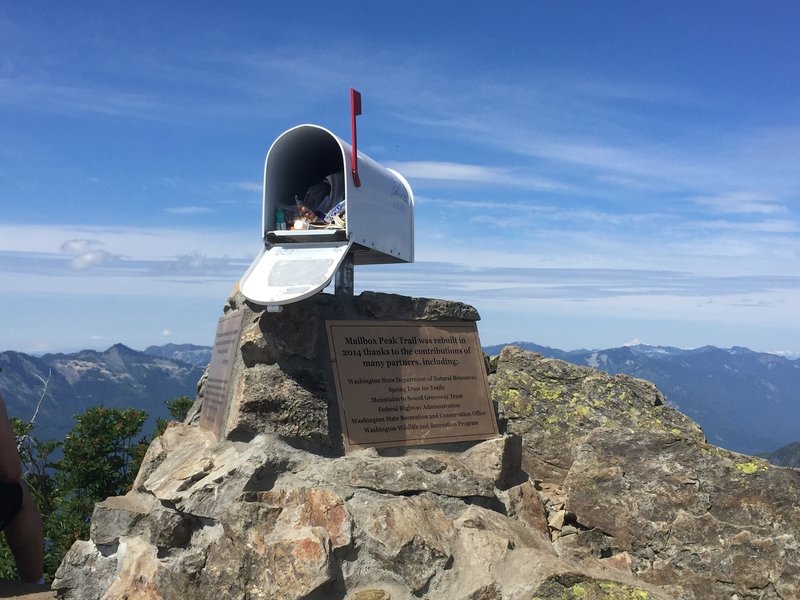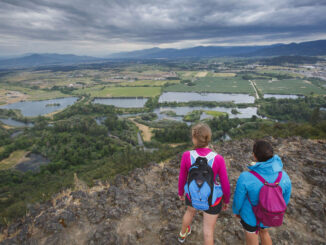
When it comes to hiking, it isn’t necessary for you to take on something extreme or outrageous such as the Appalachian Trail. Instead, it could be something very simple like walking up a hill in your local neighborhood or through a forest.
Hiking will not cost you a lot of money and it really helps to relieve stress. In fact, the physical and mental benefits that you can receive outdoor fitness and activity will in without a doubt outweigh any small costs you may incur.
Although hiking can be a lot of fun, there are several survival tips and a number of precautions that you need to consider to stay safe and avoid danger especially when we are considering more remote trips in any number trails in Oregon and the greater Pacific Northwest.
One of the most important tips is to hike in a group of people. It is a lot safer to hike with others especially when you are on a trail that you are not familiar with.
Hiking with Friends
The motivation and support that you receive from the group can help you during those times when you are thinking about packing up and leaving. Even when you are out hiking on a trail that you are familiar with, it doesn’t hurt anything to bring one more person with you since that is a natural deterrent to anybody on the trial that might be lurking around looking to cause trouble.
It is also very important to take precautions whenever you are hiking on a hill. When you are hiking up the hills your boots should be loosely laced around your ankles so there is plenty of room for movement. When hiking downhill, it is important to not jam your toes. Place your heels in the very back of your boots and tie your laces tightly around your ankles but leave them loose at your toes.
Use a trekking pole or hiking stick. The sticks will help you with your stability and balance when going up and down inclines. They provide your legs with additional support as well, reduce the pressure on your knees, and provide your upper body with support especially when you are on a long hike.
Take Water With You
Always carry water with you. If you know that your destination will have water, just carry a bit more than enough water that you will need until you arrive at your destination. When it comes to your survival, water is more important than food. Always filter water that you find out on the trail that you are going to use – unless it is water out of a natural spring. If possible, attach a long straw to your water bottle to help you drink as you are hiking.
Dress in layers to help ensure that you can maintain the appropriate body temperature as the weather continues to change. When out on a very long hike the weather may change significantly so you need to be fully prepared for all different kinds of weather conditions.
You should avoid wearing cotton clothing since it holds moisture for a long time. Instead, wear synthetic materials such as polypropylene. Be sure to wear dark clothes since they dry much faster If you are going to be hiking in an area that is well known for having tick infestations, then wear light-colored clothes.
When hiking out in the hot sun, it is also very important to protect yourself against sunstroke. If you are planning on hiking during the summer, you need to be aware that being exposed to high temperatures it can cause you to lose excessive amounts of fluids and result in heat exhaustion, or even a heat stroke in serious cases. Wear a broad-rimmed hat with a strap to provide you with better protection against direct sunlight and hot winds.
Hiking Equipment and Boots
Out of all of the hiking equipment and gear that you need, the most important is probably hiking boots. Good boots provide you with support and traction while you are hiking. High-quality boots do not need to be really expensive although you should not sacrifice on quality to get the cheapest price.
It is recommended that you buy your boots from a store or dealer who is knowledgeable about outdoor wear standards. Boots range from lightweight ones for light hikes up to heavy boots that are more durable and provide your ankles and feet with support.
The features you should look for when purchasing hiking boots include the gusseted tongue, toe box width, toe groove, price, weight, and water resistance.
In addition to hiking boots, there are other kinds of equipment that you will need for hiking. If you will be going on a day hike, then you will need signaling gear, rescue beacons, traction devices, a walking stick, a backpack, water purifying tablets (if you are not bringing your own water), hiking socks. food, sunscreen, a compass, a first aid kit, binoculars, a jacket, and avalanche probes (f you are hiking on hilly snow-covered terrain).
For overnight hikes, you will want a flashlight, knife tool (a folding knife is safer and more practical than a fixed blade), matches, rain gear, camp stove, sleeping bag, and a tent.
Make sure you have a map of your hiking route. If you will be hiking with just one other person or alone, tell your family (or the range when you are hiking in a park) where you will be and what time you are expecting to return. That way if you are lost or in trouble, someone can come out and search for you.



